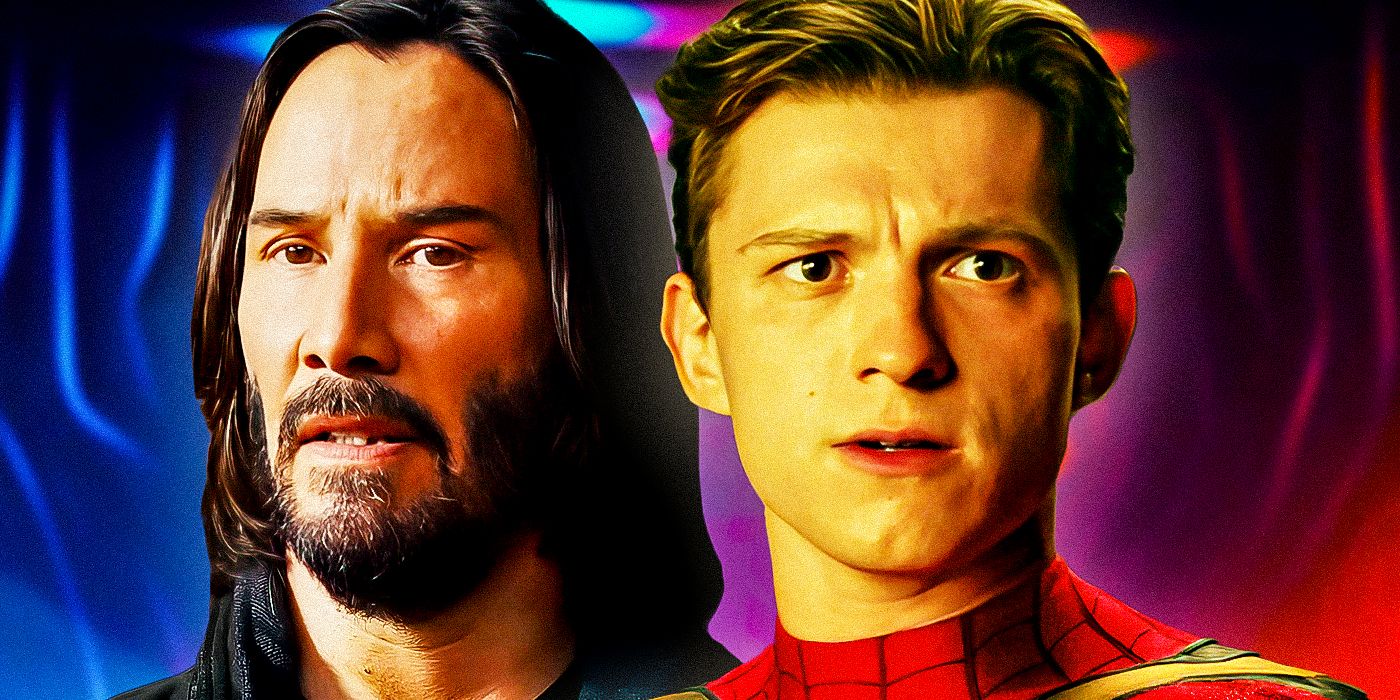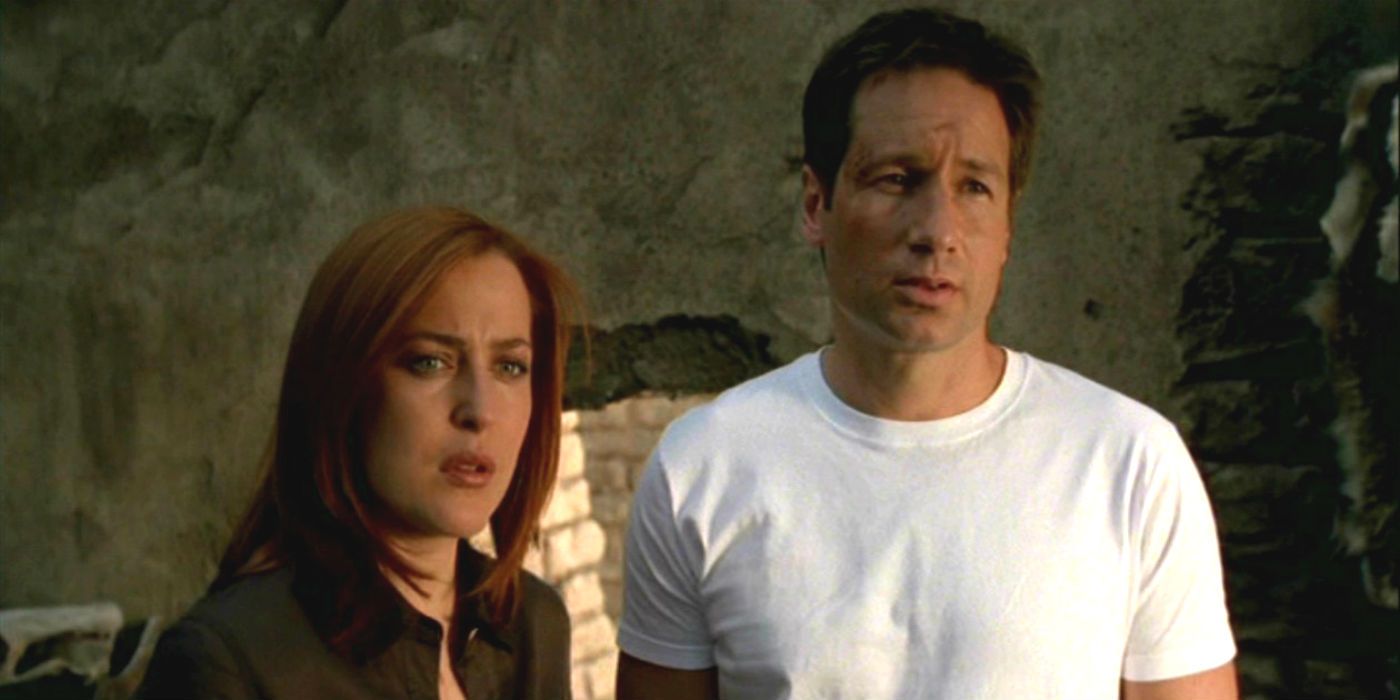Warning: Contains spoilers for One Piece Film: Red.The One Piece franchise has stretched into a lot of different forms of media over the past 25 years, and that includes having a long-running collection of movies. The first three movies in the franchise were short films presented as double features with other franchises at anime fairs, but all other movies, save for the eleventh movie, Straw Hat Chase, were feature-length films, and all of them have managed to add a wide variety of stories to the franchise, as a whole.
There have been 15 movies released in the One Piece franchise, and these are the five best that have been released so far. This list is purely subjective and only covers a few movies, so if certain movies aren’t featured on it, it doesn’t necessarily mean that they don’t merit discussion. Also, one of the movies featured on this list, One Piece: Baron Omatsuri and the Secret Island, was never licensed outside of Japan, so at the moment, there are no legal means of viewing it in the West.
One Piece: Stampede (2019)
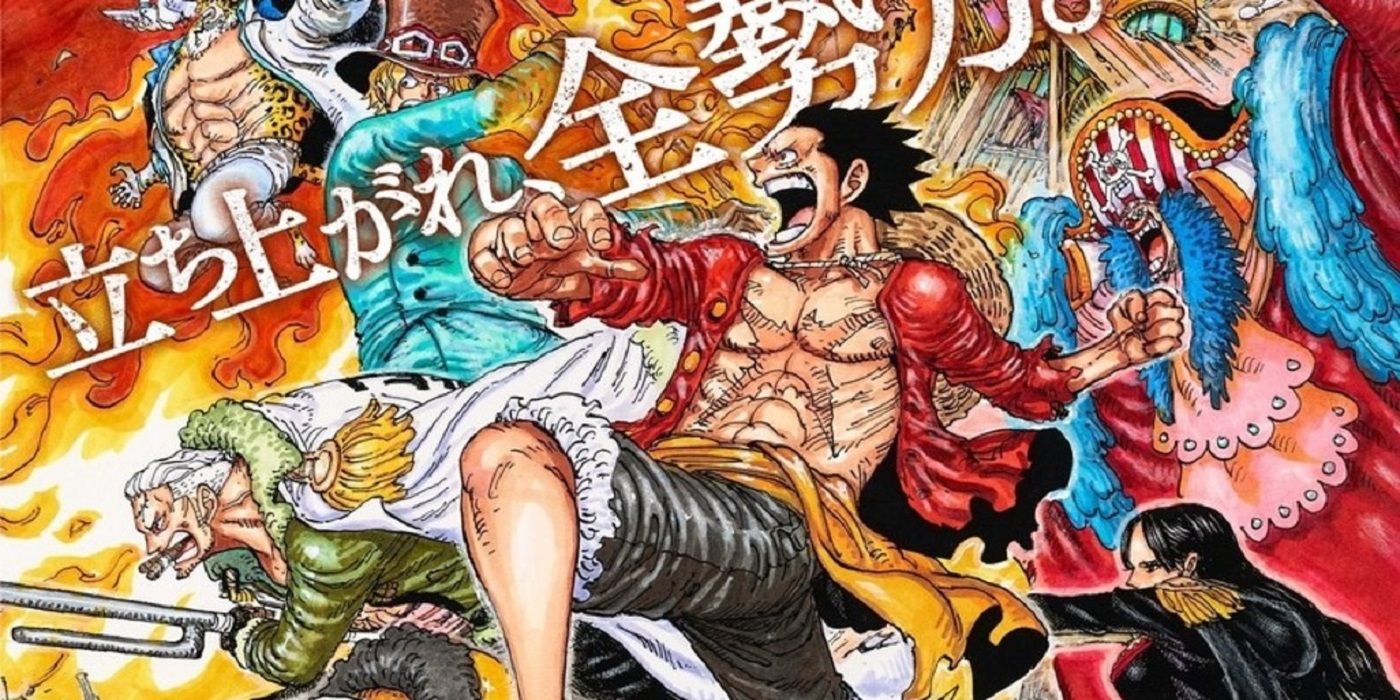
One Piece: Stampede was released in celebration of the One Piece anime’s 20th anniversary, and as that would imply, it’s one of the biggest movies in the franchise. Stampede is focused less on story and more on being a big celebration of the One Piece franchise as a whole, so in that regard, it can get a little tedious whenever the movie devolves into just being one fanservice cameo after another. Even so, when the movie does settle down for its story, all the characters are given a tremendous amount to work with and play off each other well.
The fight scenes are what truly stand out about the movie, though. One Piece: Stampede uses the same art style that’s been present in the anime since the Wano arc to have just as slick a look, and every fight scene is full of high-energy and sakuga, standout examples being the fight with all the Supernovas and the impromptu team One Piece‘s Luffy assembles in the climax. Naturally, the villain involved in all the fighting, Douglas Bullet, is a big part of that, and what he lacks in character depth he more than makes up for in menace. The movie does a great job of selling him as an intimidating enemy who pushes everyone to their limit, and it becomes extremely satisfying to watch Luffy finally take him down, the entire scene is brilliantly scored to a remix of “We Are!”, no less. The movie definitely prioritizes spectacle over story, but overall, it succeeds in making that work.
One Piece Film: Strong World (2009)
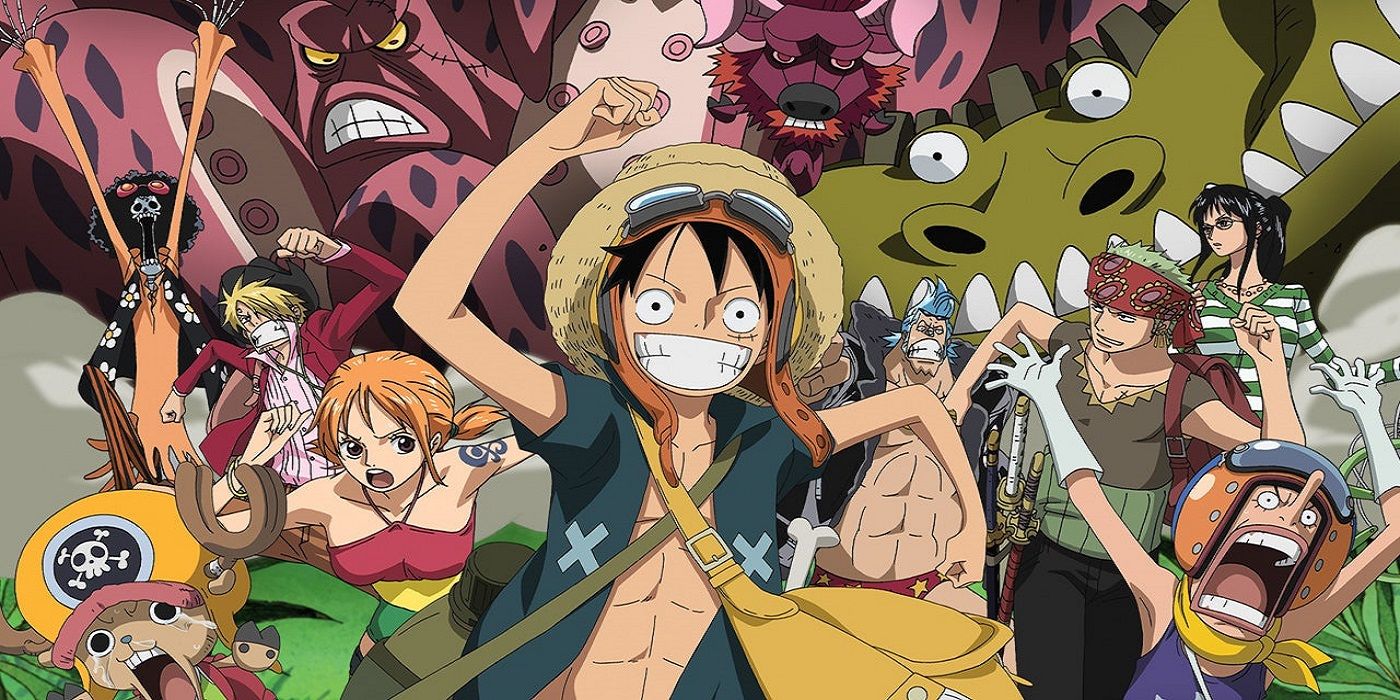
One Piece Film: Strong World received a lot of hype for two things that are now common for One Piece movies, One Piece creator Eiichiro Oda’s direct involvement with the story and the movie having certain elements be treated as canon, and for the most part, the movie succeeds in living up to the hype. Being a floating archipelago inhabited by winged people and bizarre animals, Merveille serves as a perfect setting for Strong World that embraces One Piece’s trademark style of weirdness, and sure enough, the movie is filled with plenty of goofy and entertaining scenes. There are plenty of serious bits in the movie to balance that out, of course, mostly surrounding the main villain, Shiki. The movie does a great job of selling him as someone on the highest level of power who makes the Straw Hats look like kids in over their heads, and that leads to a tense scene with Nami that also works to highlight the friendship the Straw Hat Pirates all share. Shiki’s Devil Fruit also allows him to fight with telekinesis that looks visually impressive, leading to a final fight that stands out as one of the most bombastic fights in the franchise. There’s one scene near the end of the movie that detracts from Shiki’s villainy because of how easy it would have been for him to win, but other than that, he’s a solid villain. Fittingly, Strong World is one of the franchise’s stronger entries.
One Piece Film: Gold (2016)
.png)
While Shonen Jump’s One Piece isn’t exactly formulaic, filler arcs and movies tend to follow a specific framework: the Straw Hats go to a fun new locale, learn that things are secretly terrible for the people who live there, and for one reason or another, work with some new characters to take down the villain in charge and change things for the better. One Piece Film: Gold is no different, but where it shines is how everything that follows is very much not like a typical One Piece story. Once the main plot is set up, Gold turns into, of all things, a heist movie in the same vein as the Ocean‘s movie franchise with all the familiar trappings, including the trope of not revealing the main characters’ full plan until it plays out in the climax of the film. It’s a genre that’s far removed from what One Piece usually does, but ends up playing to the film’s strength because it helps the story feel fresh, which is helped by how it goes all-in on the theme with its jazzy soundtrack and gorgeous gold-splattered visuals.
Even ignoring how it’s a change of pace, One Piece Film: Gold’s story still works. Gold is probably the One Piece story that focuses the most on the franchise’s darker themes of corruption of power and the potential dangers of capitalism, and because of that, it feels like the story has more to offer than just Mayumi Tanaka’s Luffy having to beat up a bad guy like too many movies and filler arcs can be boiled down to. On that same note, the villain of the movie, Gild Tesoro, immediately establishes himself as an entertaining villain when he’s introduced by giving the audience a full-blown villain song, and what little the movie delves into his backstory also helps to sell him as something of a sympathetic villain. Carina, essentially the deuteragonist of the movie, is also an entertaining character who has a great dynamic with Nami and fits in seamlessly with the Straw Hats, and the fact that she ends up outplaying everyone, in the end, helps to make her endearing. Add in plenty of high-caliber fight scenes that have long since become the norm of One Piece movies, and One Piece Film: Gold truly stands out as one of the most unique One Piece movies.
One Piece: Baron Omatsuri and the Secret Island (2005)
.jpg)
Regarding uniqueness and breaking the mold of the franchise, the One Piece movie that stands out the most, for better or worse, is One Piece: Baron Omatsuri and the Secret Island. The movie is directed by acclaimed director Mamoru Hosoda, and having the signature style of his work applied to One Piece gives the movie a unique look that still stands out almost 20 years after the fact. That style also perfectly complements the surreal nature of the story, as Hosoda’s soft linework helps to sell all the weirdness of the characters and the setting from start to finish.
What makes the movie stand out even more than its surrealness, however, is its dark tone. The movie essentially exists to deconstruct the core aspects of Eiichiro Oda’s One Piece; the usual bickering and one-liners the Straw Hats engage in are stripped of their comedic edge to have everyone grow more divided with every scene, and Luffy’s typical thirst for adventure is framed in a purely negative light that’s seen as the cause of problems, something that makes Luffy have a mental breakdown. All of this is part of the machinations of Baron Omatsuri, the titular villain of the movie who wants to destroy pirate crews the same way his own was destroyed, and the Lily Carnation, the demonic plant who cannibalizes his victims in some of the most grotesque imagery to ever appear in the series. Omatsuri and the Lily Carnation are two of the most terrifying and outright horrible villains in all of One Piece, so much so that Omatsuri, who shares a voice actor with One Piece‘s Blackbeard, stands out as the only villain Luffy has ever explicitly killed in the entire series.
Mamoru Hosoda has made himself a household name with movies like Summer Wars and Belle, and that same level of craft is equally on display in One Piece: Baron Omatsuri and the Secret Island. The movie is a dark and surreal story that challenges the very nature of One Piece, and doing so ends with its core strengths being made all the stronger. The dark tone might be offputting to some, but it would be hard for the movie to work as well as it does without it.
One Piece Film: Red (2022)
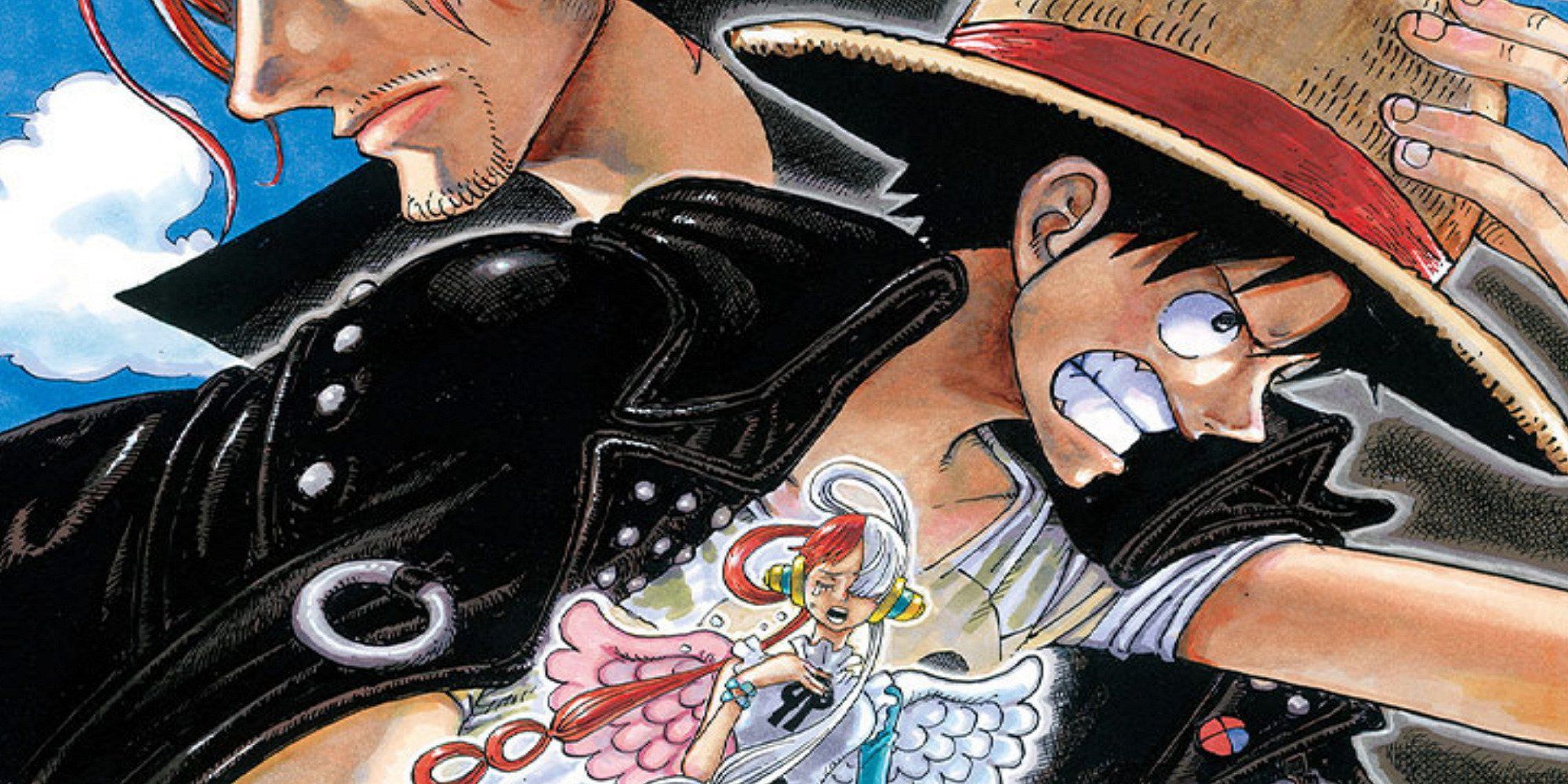
The final One Piece movie to be discussed is One Piece Film: Red, and not only is it the latest One Piece movie, but it also might be the best. Unlike other One Piece movies, Red is largely character driven and focused mostly on the main antagonist, Uta, and her relationships with Luffy, her childhood friend, and Shanks, her father. It’s different from other One Piece movies, but fortunately, the movie manages to pull it off with how effectively Uta is fleshed out. Uta’s relationships with Luffy and Shanks feels natural from both ends, and Uta herself is perfectly sold as a tragic villain. All of it comes together to make Uta one of the most endearing characters to be introduced to One Piece in recent years, which ultimately makes the hardships One Piece‘s Uta goes through in the movie and the fate that she’s dealt all the more tragic.
Another big standout of the movie is the music. One Piece always has a great score for the anime and movies, but with One Piece Film: Red being a musical of sorts, that’s taken even further by having Uta sing multiple songs through the vocal talents of acclaimed Japanese artist Ado. Ado’s work has received worldwide acclaim over the past few years, and her talents are on full display in the movie with songs that are not only great to listen to but also serve to perfectly capture the mood of the scenes they play in, whether it be an energetic rock song or a somber ballad.
Of course, a One Piece movie is far from complete without action, and the action in 2022’s One Piece Film: Red is among the best in the series. Every fight scene is a visual spectacle filled with great camerawork and overall impressive sakuga, and that’s best shown in the final fight of the movie. Every character gets a chance to show off some of their best attacks in the series, and it all builds up to a tremendous scene of Luffy and Shanks fighting in tandem that’s animated in a truly breathtaking fashion. The entire sequence is a sight to behold and more than helps sell Red as the biggest movie in the series, to date.
One Piece Film: Red was hyped up as the biggest One Piece movie to date, and the movie more than delivers on that. Between the visuals, the score, and the excellent character writing, Toei Animation’s One Piece Film: Red goes far and beyond what its predecessors did, resulting in a movie that does the best job of balancing story and spectacle yet. Red sets a new standard for what a One Piece movie should do, and with any luck, whatever ends up following it will take things even further.
